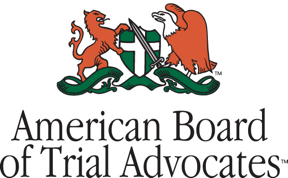For many farming families, preserving the family farm is a deeply rooted goal—and a legal challenge that becomes more complex with age.
As the population grows older, the costs associated with long-term care (LTC) present a significant and growing threat to the stability of agricultural operations. Without proper planning, farmland and other critical assets could be at risk of liquidation to fund care.
Fortunately, there are legal tools and strategies available to mitigate this risk. By understanding how LTC costs are assessed and what options exist for protection, farm families can plan effectively and maintain control over their land and legacy.
The Growing Cost of Long-Term Care
Long-term care refers to a broad range of services that support individuals who are no longer able to perform everyday tasks independently, whether due to age, injury, or illness. These services might be delivered in nursing homes, assisted living facilities, or the individual’s home.
The financial implications are considerable. The average annual cost for a semi-private nursing home room now exceeds $100,000 in many areas. Home health services, while often less expensive, can still approach $75,000 per year. These costs can persist for multiple years and are rarely covered in full by standard health insurance or Medicare.
For farm families, wealth is often concentrated in illiquid assets like land and equipment, and the question is simple but urgent: How do you cover long-term care costs without selling the farm?
Government Programs: Limited Help, Significant Limitations
Many assume Medicare will cover long-term care expenses, but this is only true in very limited circumstances. Medicare may provide coverage for up to 100 days in a skilled nursing facility following a qualifying hospital stay. However, it does not pay for ongoing custodial care, which comprises the bulk of LTC needs.
Medicaid can be more comprehensive, but eligibility is generally means-tested. To qualify, an individual typically must own less than $2,000 in countable assets. For a farmer, that threshold is quickly exceeded by even modest land holdings, equipment, or operating reserves.
Medicaid also uses a five-year “look-back” period to examine whether an applicant's assets were transferred below market value. If so, a penalty period applies, delaying access to benefits. After death, states are authorized to pursue estate recovery to recoup Medicaid expenditures, often through claims against the deceased’s real property.
Planning Options to Protect Farm Assets
The good news is that farm families have options. While no one solution fits all, the following strategies are commonly used in agricultural settings to reduce exposure to LTC costs and preserve farmland for the next generation:
1. Gifting Assets in Advance
Transferring land or equipment to heirs or successors—whether through a deed, business entity, or other lifetime gift—can help reduce an individual’s estate for Medicaid eligibility purposes. Timing is critical: if transfers occur within the five-year look-back period, they may trigger penalties. Additionally, families must consider tax consequences, such as capital gains and loss of stepped-up basis on gifted assets.
2. Establishing Irrevocable Trusts
An irrevocable trust can shield farm assets from Medicaid eligibility calculations, provided it is funded outside the look-back window. Once transferred, the assets are no longer owned by the individual, which means they are no longer available to cover care costs. While this structure offers significant protection, it also requires giving up control—something that should be carefully weighed and tailored with qualified legal guidance.
3. Purchasing Long-Term Care Insurance
LTC insurance can be a viable option for those able to qualify. Policies vary widely in cost and coverage, but many allow families to preserve assets by offsetting nursing home or in-home care expenses. Hybrid policies that combine LTC benefits with life insurance or annuities are also worth exploring.
4. Self-Funding with Strategic Asset Allocation
Some farm families choose to retain assets and plan to pay for care out-of-pocket. While this offers flexibility, it requires careful financial forecasting. Having a reserve set aside—particularly in liquid or non-farm assets—can allow the farm to remain intact even if care becomes necessary.
5. Combining Approaches
Often, the most effective planning involves a blend of the above strategies. For example, a family may place the farm in trust, purchase a moderate LTC policy, and retain other assets for near-term liquidity. The key is to align the strategy with your farm’s structure, your estate goals, and your risk tolerance.
Aligning Long-Term Care with Succession Planning
LTC planning is not a standalone process. It should be integrated into broader discussions about farm succession and estate planning. Families should clearly define:
- Who will operate the farm if a key decision-maker becomes incapacitated?
- How will medical and care decisions be managed?
- What happens to ownership of land, livestock, and equipment in the long term?
Having the proper documents—such as powers of attorney, health care directives, and operating agreements—in place can prevent delays and disputes at a time when clarity is needed most.
The Bottom Line
The rising cost of long-term care has changed the landscape for farm families. Without proper planning, even a short nursing home stay can have lasting financial consequences. However, proactive legal strategies can provide protection, preserve your assets, and give your family peace of mind.
Every situation is unique, and these decisions are complex. It's important to work with legal counsel who understands both elder law and the nuances of agricultural operations. With the right planning, your family can meet the challenge of long-term care while keeping the farm in the family—exactly where it belongs.








